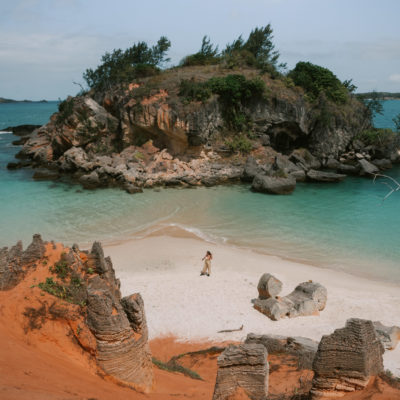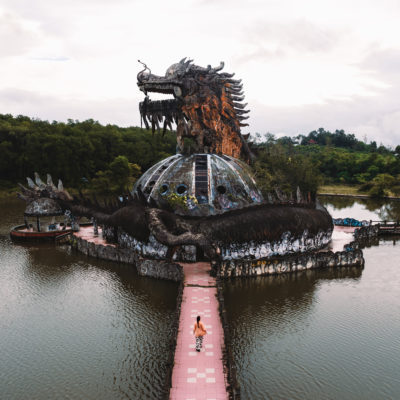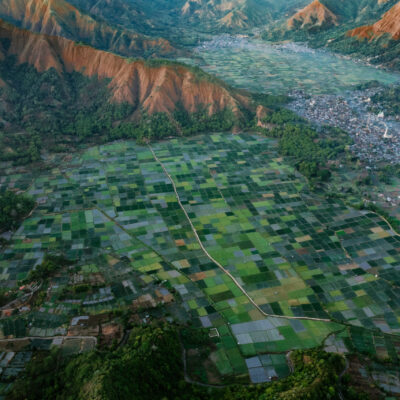There’s nothing quite like the landscape of Uluru-Kata Tjuta National Park anywhere else in Australia, or even the rest of the world. The national park is home to two spectacular sites: Uluru (also known as Ayers Rock) and Kata Tjuta (The Olgas). It is an incredibly impressive and spiritual place, particularly for the Pitjantjatjara Anangu, the local Aboriginal people. Long before you arrive you’ll see glimpses of the enormous formations, towering over the surrounding Outback for some 500 million years. A visit here is an absolute bucket list experience! This handy guide will tell you everything you need to plan your trip to Uluru and Kata-Tjuta.
Contents
- How to get there
- When to visit Uluru-Kata Tjuta National Park
- What to do in Uluru
- What to do in Kata Tjuta
- Where to stay in Uluru-Kata Tjuta National Park
To enter Uluru-Kata Tjuta National Park you must buy a permit, which can be purchased online or at the entrance to the park. It costs $25 for an adult or $65 for a family (2 adults and 2+ children) and allows you to leave and re-enter as many times as you want for 3 days.
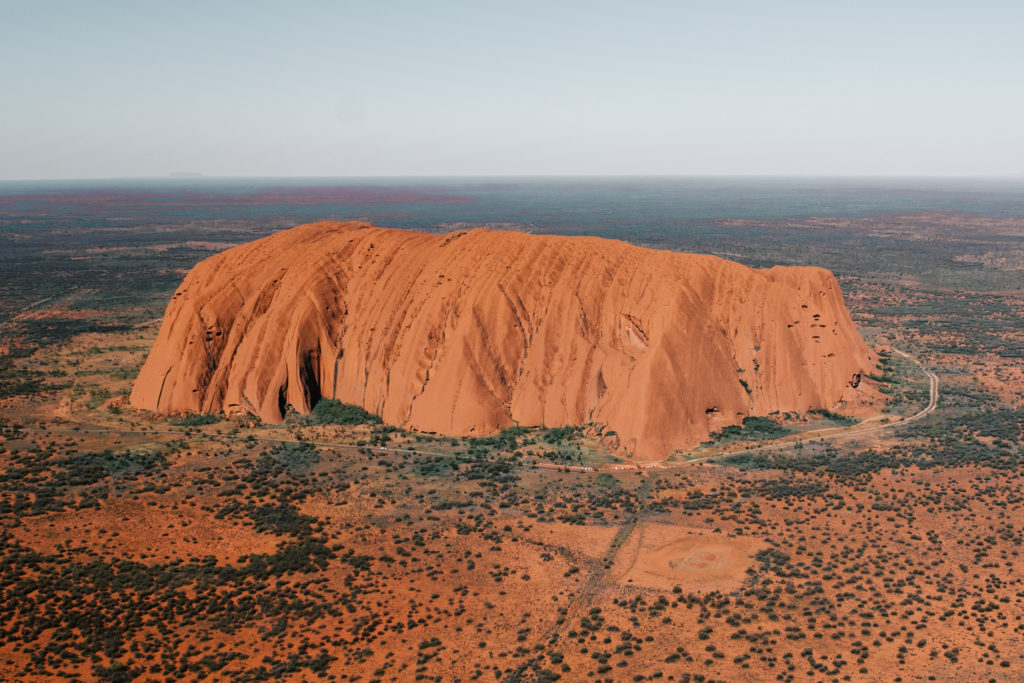
How to get there
Uluru is the heart of Australia’s Red Centre, and its remoteness is part of what makes it so exciting. That said, it doesn’t make it easy to get to! For many people the adventure will start and end in Alice Springs, the closest city to Uluru. Remember: this is Australia. “Closest” in this case still means over 500 km away! You can fly into Alice Springs from most major cities in Australia, then hire a car or join onto a tour from there. There is also an airport closer to Uluru itself 10 minutes from Yulara. It seems that airfares tend to be higher to/from there.
My suggestion – drive!
For those arriving by car, there are 3 main routes to Uluru. These are: from the North (2,000km from Darwin), from the South (1,600km from Adelaide) and from the East (some 3,000km from Queensland’s main cities). If you have a 4WD vehicle you can also travel along the Great Central Road from Perth. Be aware that the majority of this route is on unsealed roads and requires 3 permits (2 in WA and 1 in NT) to access. The journey to Uluru is a serious road trip from any direction, but worth it if you have the time to kill. Travelling from Darwin via the Stuart and Lasseter Highways, for example, takes you past other awesome places like Kakadu and Litchfield National Parks, Mataranka Hot Springs and the Devil’s Marbles.
Even if you only hire a car in Alice Springs, I highly recommend driving to Uluru. Traversing vast swathes of outback to get there is definitely part of the adventure! Despite its remoteness, the roads around Uluru and Kata-Tjuta are sealed and in good condition. Plus, the flexibility you get from having your own transport is unparalleled. You can hop between Uluru and Kata Tjuta at a whim: Uluru for sunrise, a hike at Kata Tjuta, return to Ayer’s Rock Resort for lunch and back to Uluru for sunset!
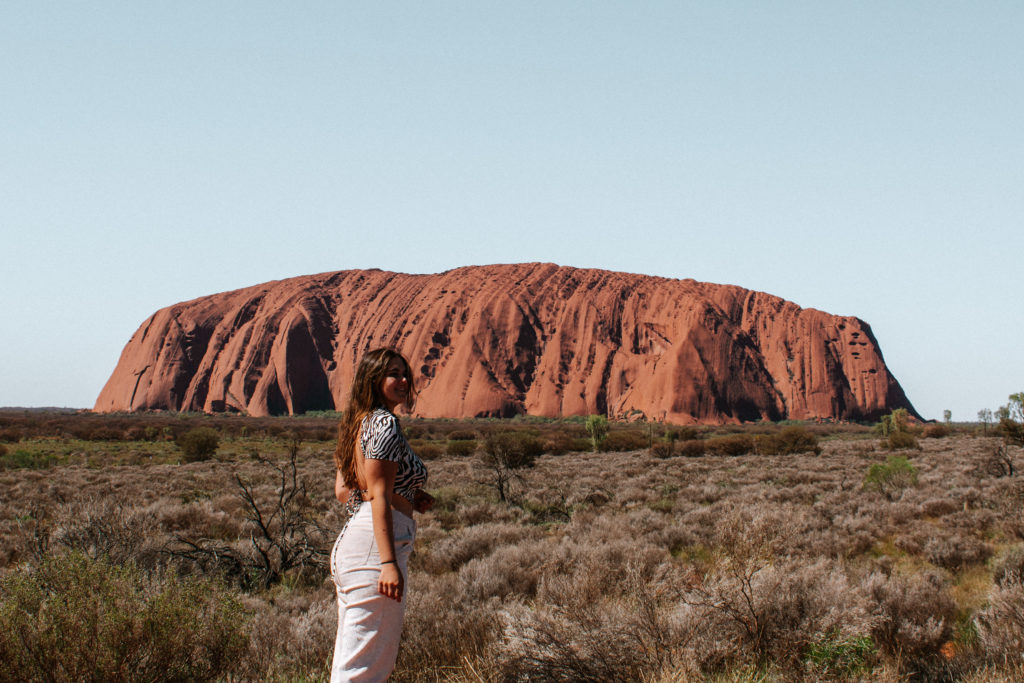
When to visit Uluru-Kata Tjuta National Park
The best time to visit Australia’s Red Centre is between May and September, when the weather is cooler. From October to March temperatures will often reach above 36 degrees celsius. It’s uncomfortable but manageable provided you wake up early and get any hiking done before the midday heat. To avoid needing to be rescued by rangers mid-hike, start walking around 6am and take lots of water.
What to do in Uluru
Standing at 348 metres high, Uluru is an incredibly striking and iconic landmark. Originally you could climb the rock for panoramic views of the Outback, but this was banned as of October 2019. This was because of pressure from the local Aboriginal community to protect a site of immense cultural and spiritual importance. There are now fences where the start of the Uluru climb used to be but even so, please do not try to climb the rock! The most amazing thing about Uluru is seeing the rock itself and how it stands out against the landscape. Personally I think you would gain nothing by climbing Ayers Rock that you don’t get from standing at its base and looking up at the enormous formation above you. Make sure you pay a visit to the Cultural Centre to learn about why Uluru is so important to the local people.
Catch an Uluru sunrise or sunset
Watching sunrise or sunset (or both) at Uluru is a rite of passage. There are sunset and sunrise viewing areas on either side of Uluru to give you the best view. As the sun moves in the sky the colours of the rock seem to change between shades of orange and red. When the sun sets, Ayers Rock stands out as a dark silhouette against a dazzling starry sky. Since there’s so little light pollution in the Outback you can see millions of stars and the milky way. It’s a truly magical experience.
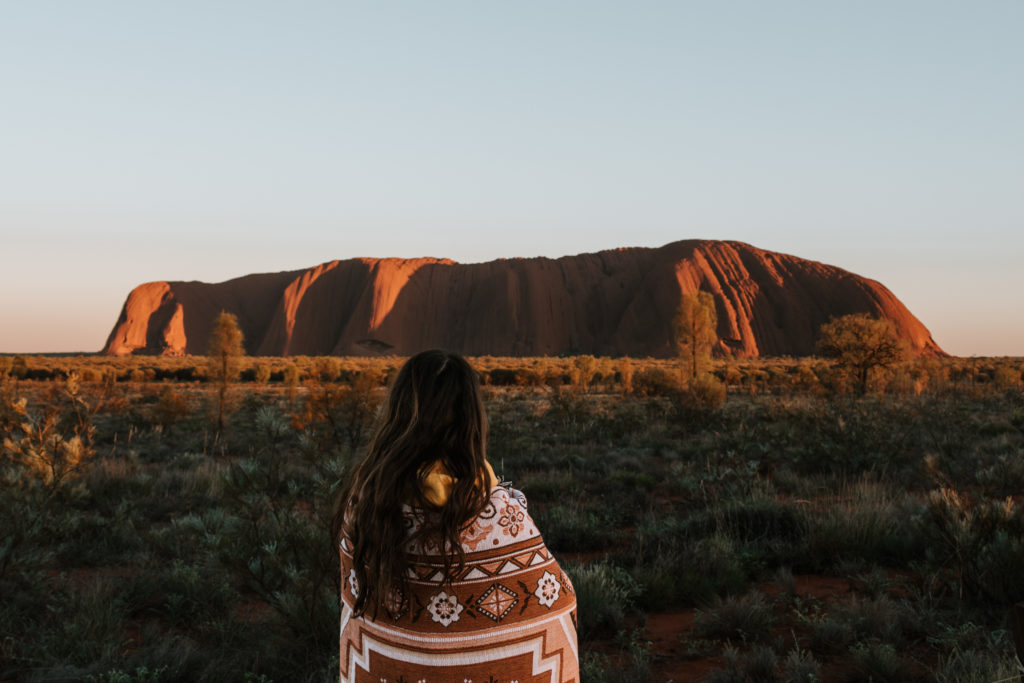
Do one of Uluru’s walks
To get a sense of the sheer scale of Uluru complete all or part of the 10.6km walk around its base. The path is flat the whole way and pretty easy, provided you take lots of water. Each section of the walk is so diverse, from crevices and waterholes to sacred sites and indigenous rock art. Start from the Mala carpark and walk anti-clockwise around the rock. The walk should take around 3 and a half hours, so be sure you use the toilets before you start your hike as you won’t find any on the path. I know from experience, 10km is a long time to wait!
Make sure to check out the Mutitjulu Waterhole, one of the few permanent water sources around Uluru. If you’re lucky, you might see some of Uluru’s elusive waterfalls here in the wet season. You’ll find the Mutitjulu Waterhole along the Mala base walk or on the short Kuniya Base Walk.
Take a Bike or segway tour
If the length of the walk seems intimidating, there are several tours that will take you around the base of Uluru. This is a great option for those travelling with kids or if you’re simply not a hiker. A tour by bike will cost around $60 whilst the segway tour will set you back upwards of $150.
Visit the Field of Light
What started as a temporary exhibition by the artist Bruce Munro has now been extended indefinitely thanks to its popularity. At sunset 50,000 colourful lights light up in the landscape, with Uluru in the background. It looks absolutely magical! You can choose either the Field of Light Pass ($45 per adult) or the Field of Light Star Pass ($100 per adult), which includes a drink/canapés and allows you to view the lights from the top of the dune. It is also possible to visit at sunrise though sunset is definitely recommended. I was absolutely gutted that the Field of Light was fully booked when I visited. So take it from me and make sure to book in advance!
Book a scenic plane or helicopter flight
If your budget allows, I can’t recommend getting a flight over both Uluru and Kata Tjuta enough. Yes, it is expensive. But it is also undoubtedly the best way to view both areas and to get a sense of their immense scale. A short 20 minute flight over Uluru alone will set you back $120, whilst a flight over both Uluru and Kata Tjuta costs $265 by plane or $275-285 by helicopter. You can book through two main companies: FlyUluru (for plane and helicopter) and Professional Helicopter Services (for helicopter).
What to do in Kata Tjuta
Around 40km away from Uluru you’ll find the mesmerising Kata Tjuta rock domes. The name Kata Tjuta means ‘many heads’, referring to the 36 domes covering over 20 square km. Whilst perhaps less famous and iconic than Uluru itself, they are definitely worth a visit. In many ways I actually preferred Kata Tjuta, not least because it feels a little less busy and touristy than Uluru. There are several trails to choose from, each of varying difficulty and length.
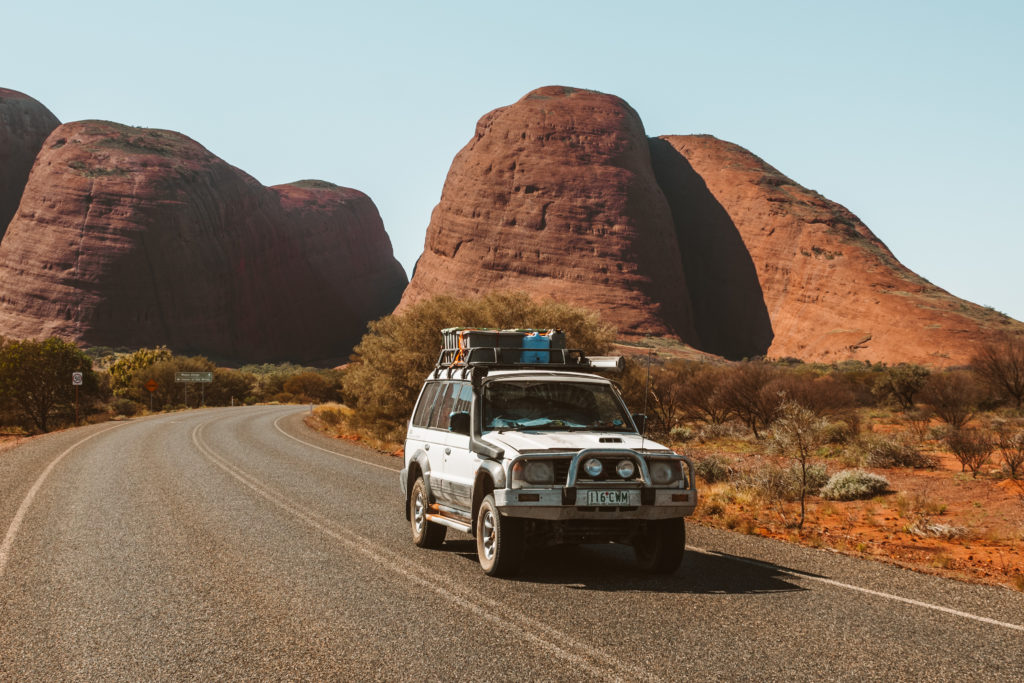
The Valley of the Winds Walk
This 7.4km circuit is steep in places but mostly very manageable. It is worth it for the incredible views of the domes. The walk is also long enough that everyone is spread out, so you not only get away from the crowds but also feel like you have the place to yourself! The hike should take around 3 hours so make sure you start early as it will get hot. If the weather forecast reaches 36 degrees Celsius, they will close the hike at 11am.
The Walpa Gorge Walk
A short 2.6km (return) track that leads to a dramatic canyon. It is especially spectacular soon after the wet season, when pools of water cast impressive reflections.
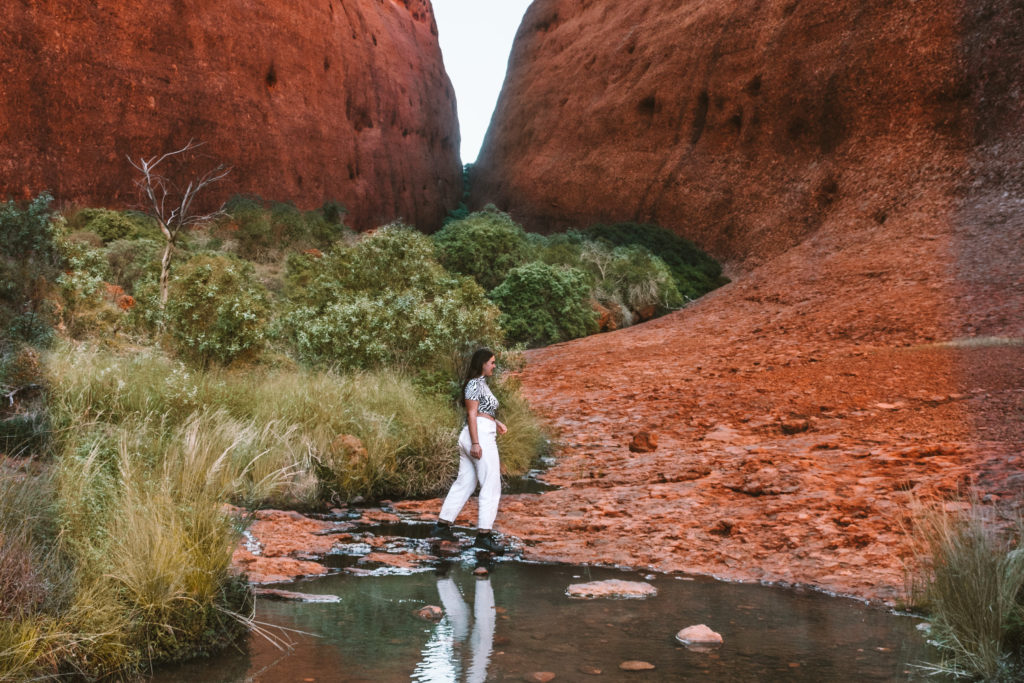
Where to stay in Uluru-Kata Tjuta National Park
All accommodation for visitors to Uluru-Kata Tjuta National Park is within the Ayers Rock Resort just 20km from Uluru. There are several options depending on your budget, from camping to luxury 5 star stays:
- Ayers Rock Campground: the campground is the most basic affordable option, but it’s still not exactly cheap (from $43 / night unpowered or $52 / night powered)
- Outback Pioneer Hotel: the most budget-friendly of the hotel options (from $300 / night)
- Sails in the Desert: a more modern hotel but a bit on the pricier side (from $450 / night)
- Longitude 131°: if you have the budget, a stay at Longitude 131° is an absolute bucket list experience. Choose from one of their sixteen luxury tented pavilions, each with floor to ceiling windows to give you uninterrupted views of Uluru. (from $4,200 / night)
The closest free camp to Uluru-Kata Tjuta National Park is a rest stop about 20 minutes from Yulara. Search on Google Maps for Sandy View Rest Area. You can also find it on WikiCamps or at these coordinates: -25.220164, 131.230103. It is very basic so it is fine for one night if you’re passing through but definitely not as a base to explore Uluru. Keep an out out for mice there too as they love to hide in vehicles!
Where next?
If you plan on driving back to Alice Springs, combine your trip to Uluru with a Red Centre roadtrip to King’s Canyon and the West MacDonnell Ranges. The drive from Uluru to King’s Canyon takes around 3 hours. To get there, follow the Lasseter Highway 140 km eastbound towards the Stuart Highway. Then turn left onto Luritja Road for another 165 km. After your visit to King’s Canyon, if you have a 4WD you can continue along the Mereenie Loop to the West MacDonnell Ranges. Check out my blog here to plan your visit to the West MacDonnell Ranges!
If you have a 2WD, simply return back the way you came to the Lasseter Highway. From there, take the Lasseter Highway 108 km to the Stuart Highway, which you can follow north back to Alice Springs. From Alice Springs simply follow the Larapinta Drive westward past the Alice Springs Desert Park.
As always, if you ever have questions feel free to contact me or message me on Instagram!


